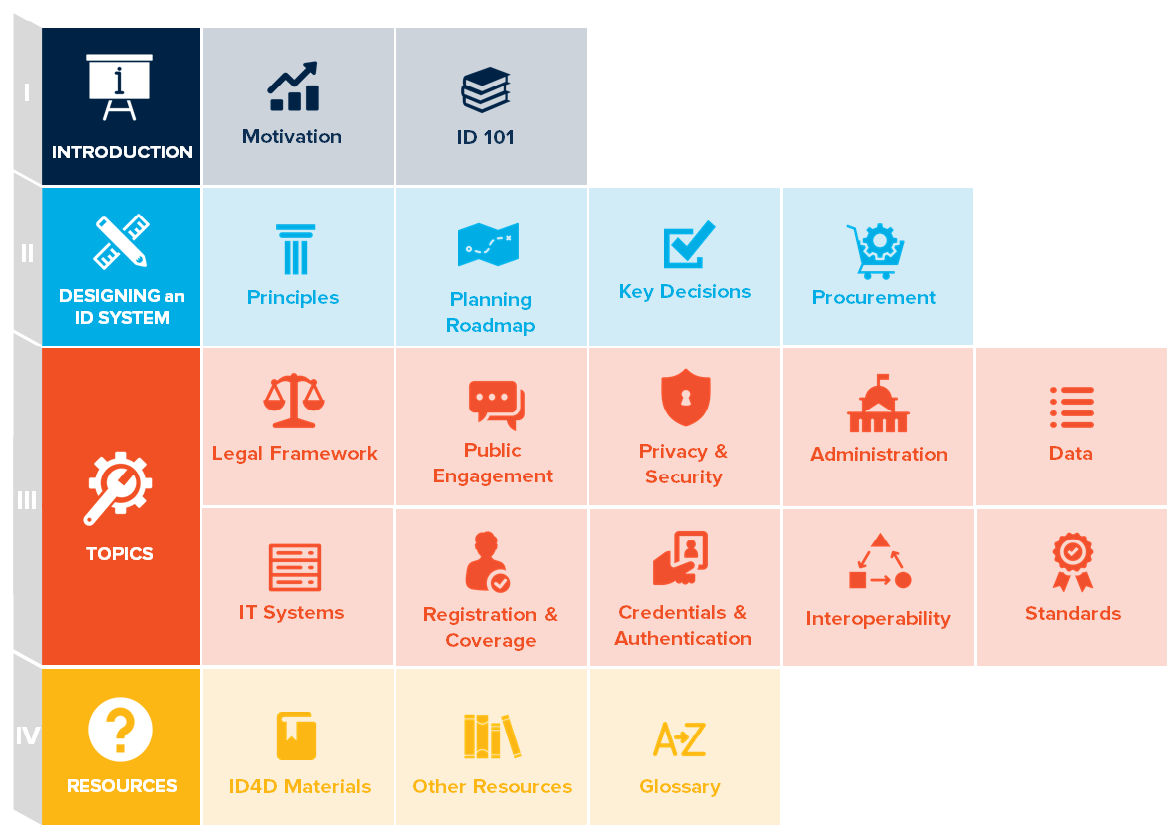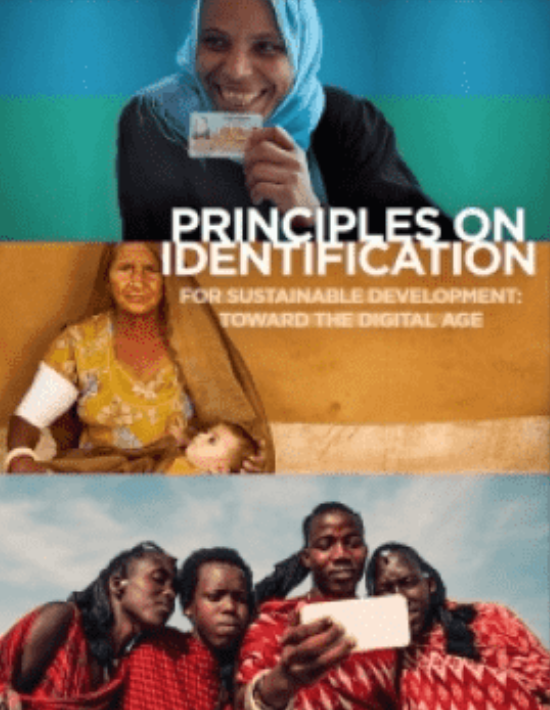Search
About this Guide
This Guide was created by the World Bank Group’s Identification for Development (ID4D) Initiative to help practitioners design and implement identification (ID) systems that are inclusive and trusted—in accordance with the ten Principles on Identification for Sustainable Development and other international standards and good practices. It is intended to serve as a central resource for country counterparts, World Bank Group staff, and other actors involved in planning, managing, and financing ID systems. The Guide builds on existing resources and publications from ID4D and other organizations and is intended to help readers navigate this disparate material in a user-friendly way.
Rather than advocating for any specific model of identity provision, this Guide presents key decisions and good practice technical options relevant for designing an entirely new ID system or improving an old one. It then offers analysis and links to more in-depth tools to assess the fitness of different design choices for different contexts and goals.
This Guide is meant to be a living document that will be updated periodically to reflect new lessons, standards, and resources. In addition to this web version, the Guide is available in a PDF version for improved accessibility and readability. Feedback to help us improve the content is always welcome and can be submitted to id4d@worldbank.org.
Scope
The focus of this Guide is on the design and implementation of ID systems that provide people with proof of their legal identity, which is commonly needed to access basic services, rights, and protections. Therefore, the Guide applies primarily to foundational ID systems—such as civil registries, national IDs, population registers, etc.—created to serve as authoritative sources of legal identity information for the general population and to provide proof of identity for a variety of public and private sector use cases. However, much of the material provided in this Guide will also apply to the design and implementation of functional ID systems that are created to manage identities for specific sectors or uses, such as taxation, voter registration, social benefits, refugee status determination, and more.
To avoid duplicating the considerable work published by the United Nations and other actors as part of global and regional initiatives on civil registration and vital statistics (CRVS), this Guide does not cover the development of civil registration (CR) systems on their own. However, given that building a strong CR is critical to providing proof of legal identity from birth and for ensuring the accuracy, sustainability, and efficiency of other ID systems, the Guide includes topics on the linkages between CR and other foundational ID systems.
As the world becomes increasingly digital, so have foundational ID systems—the Guide reflects this trend by focusing on digital (or “digitalized”) foundational ID systems. In addition to those provided directly by the government, this includes forms of digital ID that are provided in partnership with or outsourced to the private sector but which are linked to a person’s “official” or “legal” identity and recognized by the government for use in official purposes (e.g., for online government services). However, it does not discuss many other types of digital ID systems, such as those provided by the private sector for customer authentication (e.g., log-ins for email accounts or social media), or refer to the broader notion of “who you are on the internet.” Throughout this Guide, the term “digital ID” is used synonymously with “digital/digitalized foundational ID systems” unless otherwise noted.
Organization

The Guide is organized into four parts:
SECTION I: Introduction. The Guide begins with a discussion of why identification matters for development, as well as key benefits, risks, and success factors. It also includes a primer on common identity-related terms and processes.
- SECTION II: Designing an ID System. The second section of the Guide walks through important stages of planning an ID project. It begins with an overview of the ten Principles on Identification that provide high-level design guidance, and then presents a planning roadmap for assessing the country- and context-specific factors that should shape system design. Next, it summarizes the key decisions that practitioners need to make to define the scope and functional architecture of their ID project. Finally—once key decisions have been made through the planning process—the section concludes with guidance on procurement.
- SECTION III: Topics. This section provides overviews of important ID-related technologies, processes, institutions, and other topics throughout the identity lifecycle. This includes a more detailed explanation of the options discussed under Section II. Key Decisions, as well as other subjects crucial to planning and operating an ID system: (1) legal and regulatory framework, (2) public engagement, (3) privacy and security, (4) administration, (5) data, (6) IT systems, (7) registration & coverage, (8) credentials & authentication, (9) interoperability, and (10) standards.
- SECTION IV: Resources. The final section of the Guide provides additional resources, including an annotated list of the ID4D materials that provide a deeper dive into particular topics, resources from other organizations and a glossary of identity-related terms used throughout the Guide.

